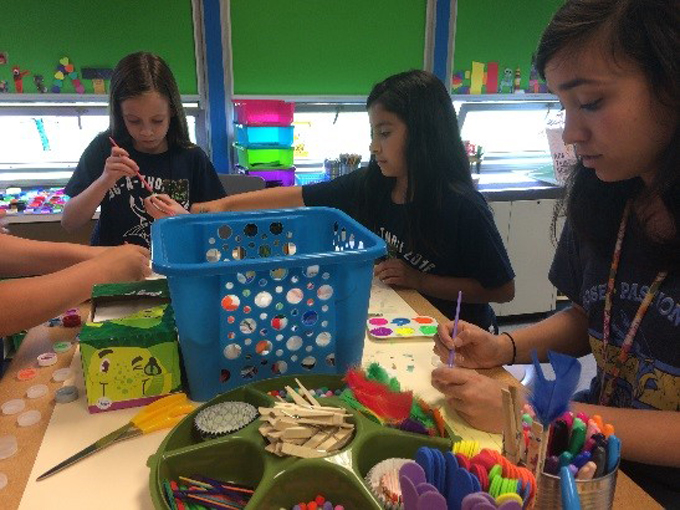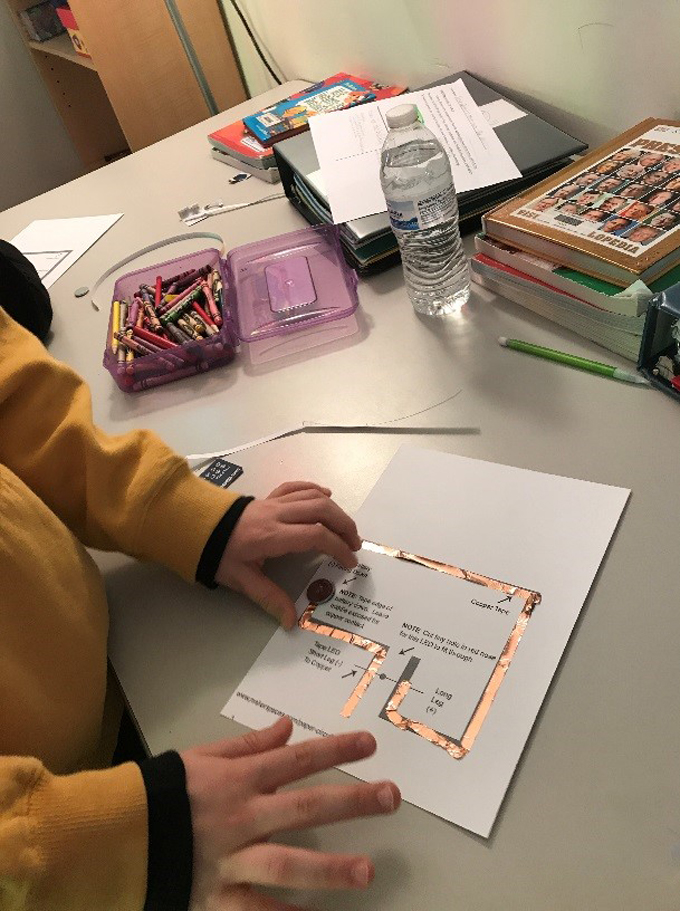
Last year our elementary school opened a makerspace. The colorful space is always full of active learners using new tools and materials to advance their learning. The room itself has sparked the interest of teachers and students to try new things and explore ideas that they are passionate about. Although science, technology, engineering, and math are logical connections in the makerspace, we are also working to integrate meaningful connections to literacy that spark curiosity and engage our learners.
Start tinkering
Tinker trays are one way to pull students in and provide opportunities for exploring objects as a part of the writing process. A tray of found materials or small loose parts can spark creative ideas that evolve into a piece of narrative writing or a poem. The trays can include items like buttons, beads, rocks, or any craft item. As students explore with the materials, they are using manipulatives to activate their minds and to generate writing ideas.
While tinker trays (like the ones described above) align with the invitation for learning approach often associated with primary students and Reggio inspired learning, trays can be used in middle school classroom, too. Our junior high English department has found that students enjoy the hands-on invitation to fiddle with materials while they brainstorm and write.
What's the hook?
Lesson hook. Anticipatory set. Whatever you may call it, it's the way we generate interest in the content of a lesson. Fueling student curiosity can happen naturally or we may need to facilitate opportunities to draw our students in. Have you tried a mystery bag or a curiosity box? Imagine revealing artifacts to students that can serve as a clue to the content of a story or a prop that might be used by the character. What if these materials were placed in the box or even placed in a special location in the classroom? How might this get students wondering?
For example, when reading a familiar story like Charlotte's Web, strategically place a spider web across the corner of the door. Infuse story vocabulary words, such as "humble," "terrific," or "radiant" in the classroom (written on the chalkboard, taped to the back of a chair, or on the windowsill) and place prop items like hay, a spider (fake, of course), or a stuffed animal pig in classroom. Would students notice? Would they begin to wonder why? How else might you build suspense to heighten student curiosity around a good book?

Try new tools
Hands-on making can be a pathway to generate student engagement in reading, writing, speaking, and listening. Consider trying a new tool to pique the interest of your students. Create with Legos. Program a robot. Build a circuit. Our fourth-grade students used copper tape, coin cell batteries, and a little bit of tape to complete a circuit and light up a small LED light bulb. Not only did it spark a new interest in circuits, but it also served as a springboard for procedural writing. Students were able to document the steps they took to design and complete the circuit. They were also able to communicate those steps to their peers as they presented their circuits to the group.
There are lots of great ways to ignite the spark within your students around literacy. These three ways are just a start toward building student interest in reading and writing by connecting their learning to hands-on literacy experiences.
For more ideas about literacy and hands-on learning opportunities, visit my website steam-makers.com.
Jacie Maslyk is an educator, presenter, and the author of STEAM Makers. You can find her on Twitter @DrJacieMaslyk or on her blog, Creativity in the Making.